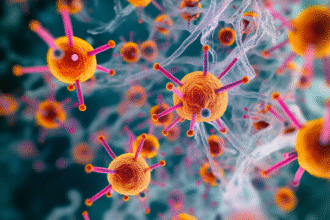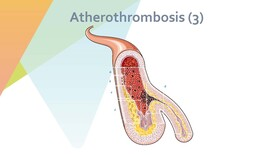Acute Rheumatic Fever (ARF)
Acute rheumatic fever is an autoimmune, post–Group A Streptococcal (GAS) pharyngitis syndrome resulting from molecular mimicry between streptococcal antigens (e.g., M protein) and host tissues (heart, joints, CNS, skin). Recurrent, untreated attacks can lead to chronic rheumatic heart disease (RHD) with permanent valvular damage (most often mitral, then aortic).
Epidemiology
- Peak age: 5–15 years; rare <3 years and in adults (except recurrences).
- Higher prevalence where overcrowding and limited access to rapid strep diagnosis/treatment exist.
- Seasonality: more frequent after winter/early spring pharyngitis seasons.
Pathogenesis (Brief)
Following untreated GAS pharyngitis (not skin infection), an aberrant immune response (cross‑reactive antibodies and T cells) targets host tissues, producing pancarditis, migratory arthritis, Sydenham chorea, subcutaneous nodules, and erythema marginatum. Persistence or repetition of this immune injury causes progressive valvular deformation (leaflet thickening, commissural fusion, chordal shortening).
Latent Period
- Arthritis/carditis typically begin 2–3 weeks after pharyngitis.
- Chorea may appear later (1–6 months), sometimes as sole presenting feature.
Jones Criteria (Revised)
Diagnosis requires evidence of antecedent GAS infection PLUS either: (a) 2 major criteria OR (b) 1 major + 2 minor criteria. Recurrences may use modified thresholds. (High‑risk populations adjust definitions for monoarthritis/polysialgias.)
Major criteria:
– Carditis (clinical and/or subclinical echocardiographic valvulitis).
– Migratory polyarthritis (large joints, sequential involvement).
– Sydenham chorea.
– Erythema marginatum (evanescent, serpiginous rash, trunk/extremities; face spared).
– Subcutaneous nodules (painless, firm, extensor surfaces, scalp, spine).
Minor criteria:
– Clinical: arthralgia (if arthritis not counted), fever.
– Laboratory: elevated ESR and/or CRP, leukocytosis.
– ECG: prolonged PR interval (if carditis not counted as major).
Evidence of preceding GAS infection (one of): positive throat culture or rapid antigen test, elevated or rising streptococcal antibody titers (e.g., ASO, anti–DNase B), or recent scarlet fever.
Clinical Manifestations
- Arthritis: migratory, painful, hot, swollen large joints (knees, ankles, elbows, wrists); dramatic response to salicylates/NSAIDs; individual joints inflame for <1 week.
- Carditis: pancarditis (valvulitis → regurgitant murmurs, myocarditis → tachycardia out of proportion to fever, pericarditis → rub/effusion). Early mitral regurgitation most common.
- Sydenham chorea: purposeless, flowing movements, hypotonia, emotional lability, handwriting deterioration.
- Erythema marginatum: faint, non‑pruritic, pink rings with central clearing.
- Subcutaneous nodules: rare; correlate with severe carditis.
Differential Diagnosis
Septic or viral arthritis, juvenile idiopathic arthritis, Lyme disease, endocarditis, SLE, serum sickness, post‑streptococcal reactive arthritis, PANDAS (controversial), chorea from metabolic/drug etiologies, infective endocarditis (if carditis predominant).
Evaluation
- Labs: CBC (mild leukocytosis), ESR, CRP (elevated), ASO/anti–DNase B titers, basic metabolic panel.
- ECG: PR prolongation, possible arrhythmias.
- Echocardiogram: assess valve regurgitation, function, pericardial effusion (detects subclinical carditis).
- Consider throat culture/rapid antigen test (though often negative at presentation due to latency).
Acute Management
- Eradicate residual GAS:
- Penicillin V orally 10 days OR single IM benzathine penicillin G (weight‑based) regardless of culture at presentation.
- Penicillin allergy (non‑anaphylactic): first‑gen cephalosporin; anaphylactic: macrolide (monitor local resistance) or clindamycin.
- Anti‑inflammatory therapy:
- Arthritis without carditis: high‑dose aspirin (e.g., 80–100 mg/kg/day divided q6h; taper after symptom resolution and normalization of inflammatory markers) or naproxen.
- Carditis (mild-moderate): moderate aspirin / NSAID.
- Severe carditis/heart failure: consider corticosteroids (prednisone ~1–2 mg/kg/day taper) + conventional heart failure therapy (diuretics, afterload reduction) as needed.
- Chorea management: supportive (reduce stress), consider valproate or carbamazepine for disabling chorea. Phenobarbital less commonly used now.
- Heart failure: diuretics, ACE inhibitors; rarely inotropes. Severe acute mitral or aortic regurgitation may need surgical evaluation.
- Activity: bed rest during active carditis until inflammatory markers fall and cardiac status stabilizes.
Secondary Prophylaxis (Prevent Recurrence)
Essential to prevent cumulative valvular damage.
- First choice: IM benzathine penicillin G every 4 weeks (some high-risk settings use every 3 weeks). Dosing weight-based.
- Alternatives (if IM refused/contraindicated): oral penicillin V twice daily, sulfadiazine once daily (if no sulfa allergy), or macrolide (least preferred due to resistance risk).
- Duration (approximate):
- ARF without carditis: 5 years or until age 21 (whichever longer).
- Carditis without residual valvular disease: 10 years or until age 21 (whichever longer).
- Persistent valvular disease: at least 10 years or until age 40; sometimes lifelong.
Endocarditis Prophylaxis
Rheumatic valvular disease alone is not always an indication under current guidelines; apply standard infective endocarditis prophylaxis recommendations for high-risk valve lesions or prior endocarditis.
Prognosis
Outcome hinges on severity of the first attack’s carditis and adherence to prophylaxis. Recurrent ARF drives progressive valve scarring leading to stenosis/regurgitation, atrial enlargement, arrhythmias, heart failure, and increased need for surgical repair or replacement.
Prevention
- Prompt diagnosis and antibiotic therapy for streptococcal pharyngitis.
- Public health: reduce crowding, improve access to primary care, health education.
- Adherence programs for long-term prophylaxis (reminders, community health outreach) reduce RHD burden.
Key Takeaways
- ARF is preventable: treat strep throat, then maintain secondary prophylaxis.
- Jones criteria + evidence of prior GAS infection guide diagnosis; echocardiography detects subclinical carditis.
- Early anti‑inflammatory treatment relieves symptoms; only prophylaxis prevents future immune attacks.
- Consistent IM benzathine penicillin remains cornerstone of recurrence prevention.
Educational information only; management should follow current cardiology/infectious disease guidelines.







